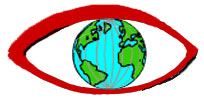| Editorial
The first time that I used a computer I was thirteen
years old. The year was 1996; I had just migrated to the United States
from Jamaica, a classified developing nation. Most children in the
United States of America and Europe were already exposed to the computer
and its benefits, why are children in the developing world still a
step behind the rest of the world in technology education? This special
issue aims to answer the former question. More importantly the following
articles will explore the development of wireless technology and the
way it can be used by educators in developing countries to communicate
knowledge to their youngsters so that they can help themselves and
experience technological development parallel to the rest of the world.
The developing world is in a constant state of trying to ‘catch
up’ to the West in terms of social and technological development.
Wireless technology can be a tool that enables sustainable development
starting now. The youngsters of today in developing countries can
be educated simultaneously and on the same level as children in the
West.
Wireless technology provides the necessary infrastructure so that
youngsters can have a gateway into the future, learning about helpful
technologies and having access to a world of information. Technological
education will not save the developing world but it can place youngsters
on the pathway toward a certain level of equality with other nations
if they have access to the technology and a way of mastering the necessary
skills. It is important to recognize that technological development
often takes the backseat in a myriad of other more ‘pressing’
problems because of the social and political stresses on the governments
in developing countries. Additionally, technological education presents
social implications for most societies and the developing world is
no exception. Educating children about technological tools will inevitably
change their behavior and ways of living, but a significant part of
education involves facilitating this change and guiding the transition
from one way of viewing the world to the next.
The articles in this special issue will also look at a product that
is effective on the market today and applicable to developing nations
as a prerequisite that aids in education. The article on technology
will explain wireless technology as it exists today and through this
explanation one will be able to see its possible benefit as a larger
plan for education.
“In past decades attention has centered on the ‘space
race’, weapons technology, new cars, or medical breakthroughs.
Now the biggest industry in the world produces ‘information’
and ‘entertainment’ and more people are employed in it
than in any of the traditional industries.” (Branston 1999,
p.175) Children in every part of the world deserve to be educated
in the technology that will enable them to work together and share
in what is being dubbed the ‘biggest industry in the world’.
Wireless technology addresses the fundamental issue of access to technology
ensuring that as many people as possible are incorporated into the
changes occurring in time and space. It is imperative that wireless
technology be considered seriously and certainly with a vision toward
increasing education about the numerous developing technologies in
the world. There also needs to be a concerted effort to support forward-thinking
organizations such as Digital Nations, which aims to empower people
in all walks of life to invent their own tools and solutions (mit.edu).
The children are the future of the developing world.
REFERENCES
http://www.mit.edu
Branston and Stafford, The Media Students Handbook
London: Routledge, 1999

|
![]() RLD
VIEWinternet
edition
RLD
VIEWinternet
edition 
RLD VIEWinternet edition